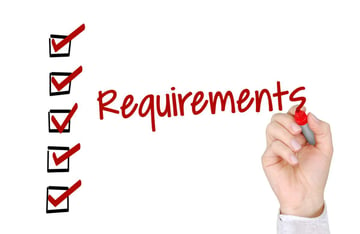I Chose a Bad Virtual Assistant: Now What?
Published January 13, 2022. Updated July 5, 2023.
There are times when you add a person to your team — either an in-person W-2 employee or a virtual contractor — and it doesn't work out. However, no one wants to let a team member go. It causes stress in the business and on the team. Plus, losing time and money on the recruiting and training process invested in that team member is extremely inconvenient and costly.
However, the process of letting a remote team member go is much easier than letting go of a W-2 team member. While it's never the outcome you hoped for when choosing a VA for your property management company, there are advantages to building a remote workforce when it's time to part ways with a virtual assistant that isn't the right fit.
We prefer you experience the best long-term VAs that deliver what you expect, but here are some insights into what to do if you chose a bad virtual property management assistant for your team.
Not Every Property Management Virtual Assistant is the Best Fit
Are virtual assistants worth it? Yes! However, we will be the first to admit that while we do everything we can to ensure our thousands of virtual assistants are quality team members for your company, depending on the role, the person, and where you find a VA, not everyone will ultimately be the right fit for your workforce.
That's okay!
Every new working relationship with a skilled virtual team member starts with the promise of a successful long-term experience that helps your business grow. However, it's time to take action when it becomes clear that a VA isn't working out in a role.
Letting an Employee Go vs. a Virtual Team Member
When it's clear that it's time to part ways with an employee or a remote assistant, there are significant differences in the process.
With a W-2 team member, even in a right-to-work state, property managers have to document every situation and put the employee on a performance improvement plan. If not, the team member can file unemployment or pursue a lawsuit. In some cases, dealing with the aftermath of a bad employee is just as bad, if not worse, than dealing with them while they were a part of the team.
However, to end a relationship with a contracted virtual assistant is as easy as informing them when their last day is and paying the final paycheck. With VPM Solutions, it is as simple as closing the job and allowing the system to pay the remote team member their final approved timesheets.
You don't have to document situations that led to choosing not to work with that VA any longer, file paperwork, or worry about a potential lawsuit. Because VAs are independent contractors, you can simply part ways and move forward with the search for your next virtual team member to fill the vacant role.
.jpg?width=1200&name=Businessman-having-questions-(R).jpg)
Before You Part Ways With a Virtual Assistant
Is letting someone go the only option if they're not working out in their current role for your property management business? If you're hesitant to end a contract with a VA completely, there are other options.
Could they fit anywhere else in the business? Consider a few questions about the person:
-
Is this the right person for the company, but are they in the wrong seat?
-
Are they failing at this job because they have no direction?
-
Are you delegating tasks appropriately vs. abdicating without proper guidance?
-
Do they understand the measurables, and are the measurables reasonable?
-
Have they had the appropriate training?
Before giving up on a team member, be honest and really determine if this is a team member challenge or a company or management challenge. Many times, property managers bring on the right person but then put them in a position to fail.
However, if you ask these questions and the best solution is still to let the person go, don't linger over the change that needs to be made.

How to Avoid Bad Team Members
Removing a bad team member is only part of the solution. Going forward, avoiding the same mistake of choosing another virtual assistant that isn't the right fit for your company or the role is crucial.
Once you add the wrong person to your team, take time to figure out the root cause, improve your workforce-building process, and eliminate making bad staffing decisions.
Here are a few insights into choosing better remote team members now and in the future!
1. Get the Right People on the Boat
Do you have core values and a defined culture in your company? If you don't have these crucial company elements documents, you still have core values and culture . . . it just may not be the ones you want.
Culture starts from the top and is pushed down. As a company leader, one of your primary jobs is to create and enforce the culture you want for your property management company or real estate business. By having a defined culture, you can add team members (and let them go) based on your culture.
The first obstacle to getting the right people on your "boat" is to make sure they fit into your culture.
2. Put Them in the Right Seats
Now that you have found the right culture fit, you must find the right seat for them.
Having the right person in the wrong seat is not a recipe for success. To get the person in the right seat, it's crucial to understand the personality type ideal for the job role you are trying to fill and make sure it matches the personality type of the team member you chose for the role.
For example, if you're filling an accounting position, this position requires attention to detail and is process-focused. However, the person that you're considering bringing on is outgoing, people-focused, and has no attention to detail. So, he may be the right person to match your company values, but he is the wrong person for the seat you are trying to fill.
Your options with this candidate are to see if they're a good fit for a role that better suits their personality type and skills or look for a different candidate to fill the accounting role.
There are many different personality profile tests out there to help you build your workforce. Use the tests that work best for your company!
3. Give Them Measurables
For success with a property management virtual assistant, you must have a detailed job description for the role so that you know exactly what you want the outcome of the job role to be.
The more vague you are in the job description, the higher the chance of failure. You'll also want to give the job role measurables, known as Key Performance Indicators (KPIs).
Each job role should have 1-3 KPIs so the person doing the job can be measured and guided toward success. Otherwise, you won't, and they know if they are doing a good job or where they need help to improve.
4. Train Them
In his book, "The One Minute Manager," Ken Blanchard discusses the importance of spending a lot of time with a new team member. That translates to new virtual assistants, too!
One successful way is to train them over ZOOM for an hour each day at the beginning of the day, then have them re-watch the training video and create the training manual for the role.
Depending upon the complexity of the job role, this training can take one week or three months. However, do not rush the training. Your new team member will learn more if they build the training manual instead of you.
With the right virtual assistants in the right seats, measurable KPIs, and excellent training efforts, property management company owners will experience better success with VAs and reduce the potential of choosing the wrong virtual assistants!
Choose the Best Remote Team Member for the Role With VPM Solutions
Realizing you've selected a bad VA after adding them to your team and investing time and money in training is frustrating and costly. Avoid this issue by implementing the tips we've mentioned today and building your workforce through VPM Solutions!
With more than 25,000 skilled and industry-trained virtual assistants, plenty of talented candidates are available to fill roles on your team. Start today by creating a Free Company Profile!





















